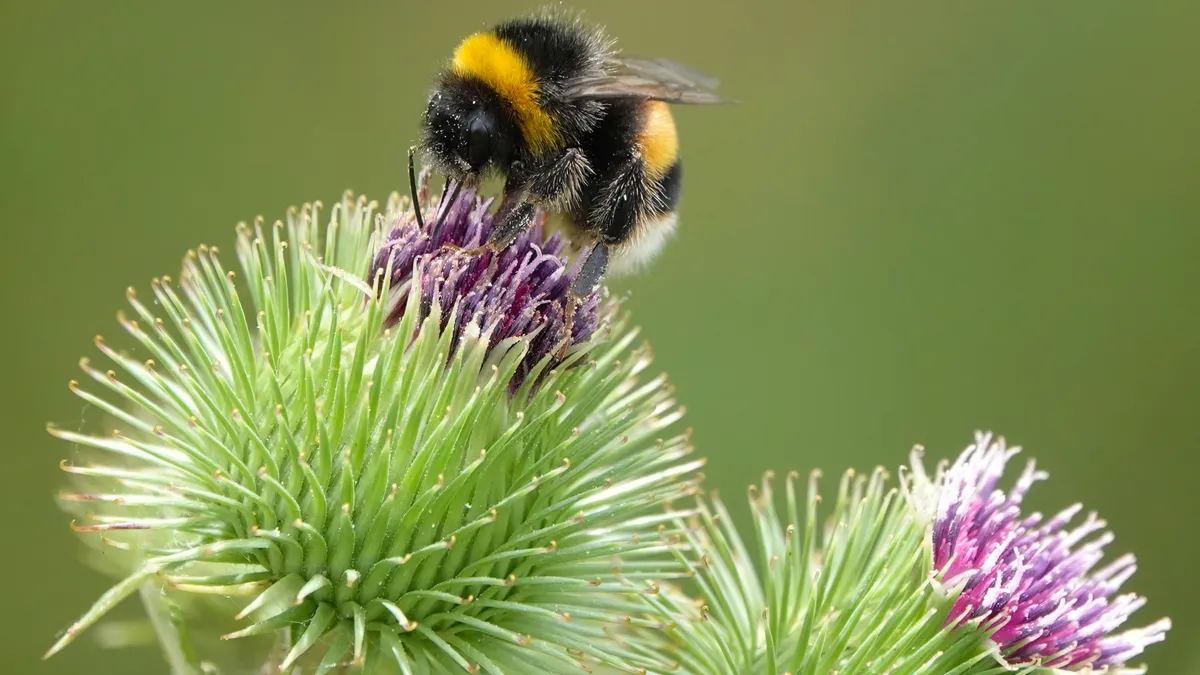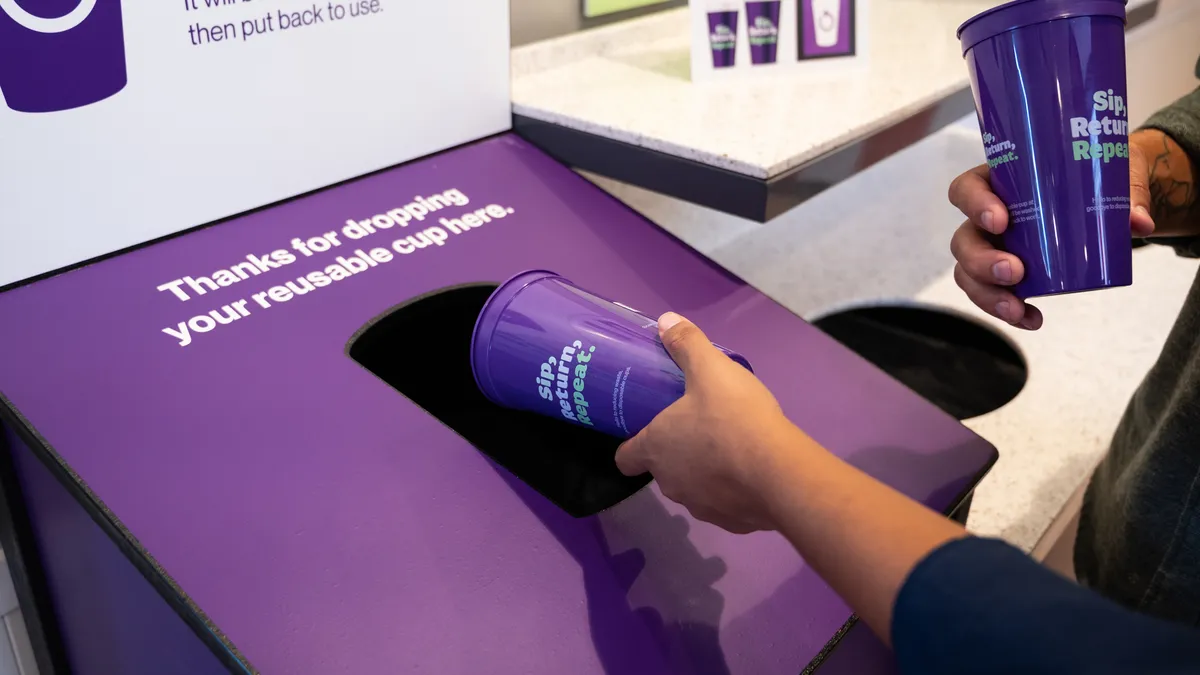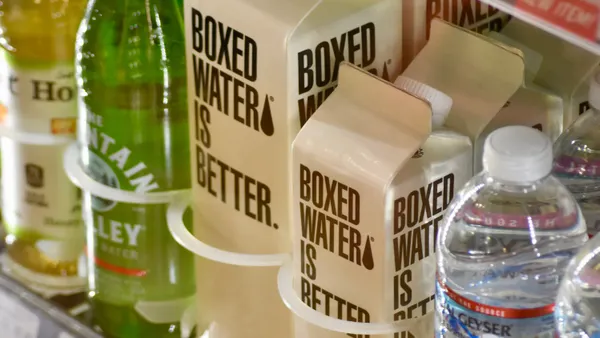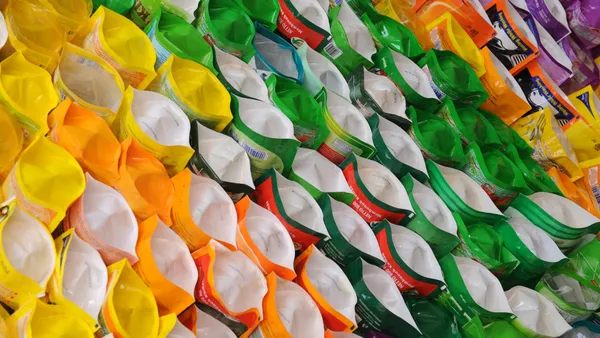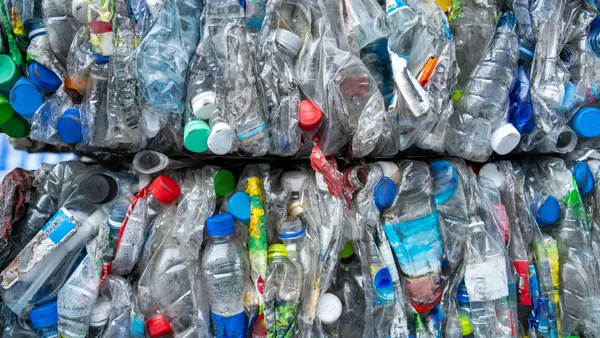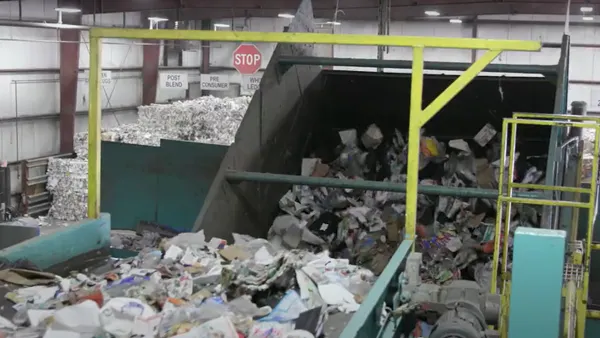Amid new efforts to slow biodiversity loss, companies in the packaging sector have begun to consider addressing the issue in their sustainability plans. But measurement challenges mean that broad adoption of such measures is unlikely — at least for now.
The rising interest is driven in large part by new international agreements to address the biodiversity crisis. Those actions were prompted by studies documenting staggering global declines in biological diversity: the variety of animals, plants, fungi and microorganisms on Earth. About 1 million species are at risk of extinction, according to a 2019 UN report.
To stanch the loss of the world’s animals and plants, last year more than 190 countries signed the Global Biodiversity Framework, which calls for restoring or conserving 30% of terrestrial and marine ecosystems by 2030. One of its four goals is to increase financial resources for biodiversity protection from both the private and public sector. The European Union’s deforestation regulation, which takes effect later this year, is also driving corporate interest in biodiversity conservation.
A 2023 analysis by PwC found that 55% of global GDP — about $58 trillion — is “moderately or highly dependent” on nature. In five industries, including forestry, the economic value of their direct operations is highly reliant on nature.
“Businesses are recognizing the risk of biodiversity decline,” said Healy Hamilton, chief scientist for the Sustainable Forestry Initiative, which certifies forests managed with the environment in mind. “The science is abundantly clear,” she said, adding that business leaders are also recognizing that “nature’s decline is an economic risk.” Through ESG reporting, companies can assess and plan to mitigate risks.
Within the paper packaging sector, scrutiny of the industry’s impacts on biodiversity will only intensify as demand for its products increases, said Nicole Rycroft, founder and executive director of Canopy Planet, an environmental organization that works with companies on sustainability challenges. About 400 million metric tons of paper and cardboard are produced globally each year — and demand is rising, she noted.
“When you have such a large existing footprint, that means that's a significant growth annually in terms of impact on carbon-rich forest ecosystems,” which affects both the climate and biological diversity. The demand is driven primarily by e-commerce, which in some cases requires seven times the packaging of an in-store purchase, she said, as well as the shift away from plastic.
Rycroft said her organization has seen increased interest in its Pack4Good program, in which companies pledge to eliminate the use of fiber from “ancient and endangered forests.” More than 400 brands, including Ben & Jerry’s, Seaman Paper and Stitch Fix have signed onto the program so far.
“By reducing the reliance on forests to provide the fiber for making packaging — high-quality packaging — be it consumer-facing or more B2B in nature, companies can significantly reduce both their carbon footprint as well as their biodiversity footprint associated with packaging,” said Rycroft.
An emerging ESG focus
While still far less common than greenhouse gas emissions in ESG reporting, biodiversity is poised to become a key part of these strategies in the months and years ahead as companies come to understand both the risks and opportunities. In January, during the World Economic Forum in Davos, Switzerland, 320 packaging companies, including Smurfit Kappa and International Paper announced a commitment to start making nature-related disclosures.
Stemming the loss in the variety and abundance of species is in many companies’ best interest, numerous reports have found.
For example, an analysis released earlier this year by S&P Global found that 85% of the companies in the S&P Global 1200 are “significantly dependent” on nature. (While the terms are often used interchangeably, nature refers to all of the natural world — from animals and plants to soil and rocks — while biodiversity refers to the variety of life alone.) The report also found that 46% of those companies hold at least one asset within an important area for biodiversity that “could be exposed to future reputational and regulatory risks.”
Biodiversity pledges still lag far behind climate-related commitments, however. A global analysis by S&P of about 100 companies found that just 22% evaluated the impact of their value chain on biodiversity, and only 31% acted on pledges related to biological diversity. But that may soon change: 35% said they plan to take action, and 45% reported that they intend to assess their effect on biodiversity in the next two years.
The slow pace of adoption may be partly due to the newness of international and domestic biodiversity policies. But the unique challenges of measuring biodiversity and reporting biodiversity-related activities have also contributed to the lag, industry sustainability experts say.
“I think that's going to be a challenge for everybody,” said Outi Marin, head of sustainability reporting at Smurfit Kappa, which supplies boxes to companies including Unilever, Nestlé and PepsiCo and owns working forest lands in Colombia, France and Spain.
Biodiversity is a bigger challenge than water, for example, which the company already reports on. In measuring water quality and quantity, “you get clear results,” she said. “But [with] biodiversity, you can’t measure from the same spot and come to the conclusion that it’s good or bad because species migrate. What’s more, determining which metrics to use is more complex, she adds. “It’s also about trying to find those indicators that are material to you and then being able to express them in a more quantitative manner.”
The packaging sector’s long history with sustainable forestry practices could give it an advantage in the global push to figure out how to ensure accountability, industry experts say. Because of intense public and legal scrutiny of logging’s impacts on species like the Northern spotted owl in the Northwest during the 1980s, many companies have well-established sustainable forestry practices that they say also protect biodiversity.

For example, forest certification programs, most notably those established by SFI and the Forest Stewardship Council, have been in place since the 1990s. These programs set standards for forestry practices and compliance is verified through independent audits. Some standards already address biodiversity. For example, SFI’s updated forest management standards, issued in 2022, include measures to help protect biodiversity, wildlife habitat, water quality, species at risk and forests with “exceptional conservation value.”
“I think they're very closely aligned,” Chris Davidson, vice president of sustainability at WestRock, said of sustainable forestry and biodiversity objectives. The company sources its fiber from timber operations certified by SFI, FSC and two other sustainable forestry certification entities.
In addition to sourcing fiber from sustainably managed forests, WestRock has worked with The Nature Conservancy to protect long leaf pine forest habitat in the Southeast for the red-cockaded woodpecker, the northern long-eared bat and other species. The company has committed $15 million to support community projects that protect and enhance biodiversity, freshwater sources, and working forests, according to its 2022 sustainability report.
Marin pointed out that Smurfit Kappa — whose pending purchase of WestRock will make it the world’s largest publicly traded packaging company — has 67,000 hectares of forests and plantations in Colombia, and all have been FSC-certified since 2003. About one-third of those 67,000 hectares are set aside as “natural forest,” and the company is working with a local university to monitor the biodiversity there, she added.
Other companies are also taking a closer look at biodiversity and nature protection, including International Paper and Graphic Packaging International. One target included in IP’s 2022 sustainability report is to source 100% of the company’s fiber from either sustainably managed forests or recovered fiber while protecting biodiversity.

Standards take shape
One unanswered question is whether these long-established sustainable forestry and conservation efforts are enough in themselves to help companies in the paper and packaging sector meet the new challenge of biodiversity reporting, or if they’ll need to develop additional metrics and reporting protocols.
Some in the industry point out that existing management standards already support multiple sustainability-related goals. SFI touts its recently updated certification standards as supporting nature-based solutions, for example. “When supported by the right policy frameworks, sustainable forest management acts as a bold but proven approach to tackling multiple global challenges by doing good instead of just avoiding harm,” SFI wrote in a recent sponsored article.
To some forest and biodiversity advocates, however, the best way to protect forest biodiversity — and lessen biodiversity-related risks to companies — is to pivot to alternatives to wood fiber. The industry still relies on virgin forests, they point out.
“Forests have been identified as the cheapest, fastest, most effective way for us to stabilize our climate. And you can certainly say the same thing when it comes to biodiversity as well,” Rycroft said. “And so there is this overlap, to deliver both on climate goals as well as biodiversity goals, by keeping forests standing. And there is this incredible opportunity to diversify the fiber basket to these next gen alternatives.”
Canopy has created the EcoPaper Database to help companies find vetted options for paper and packaging that is not derived from “ancient and endangered forests.” The database lists more than 1,100 options, including those using 100% recycled content or alternative fibers such as wheat straw, flax, seaweed and food waste, as well as some FSC-certified products.
But for the foreseeable future, the paper and packaging sector will continue to be highly dependent on managed forests — and consequently, it has an important role to play in conserving biodiversity, Rycroft and others say. So getting data collection and measurement protocols right is crucial to establishing credible ESG claims for biodiversity, said Hamilton.
A pair of international efforts to establish and encourage the adoption of clear, global standards are underway.
An effort by the Taskforce on Nature-related Financial Disclosures aims to provide guidance for what information about a company’s impacts on nature it should disclose, as well as how they should be reported. In September, TNFD issued a set of disclosure recommendations, modeled after the Task Force on Climate-related Financial Disclosures, which focus on strategy, risk, governance, metrics and targets, and impact management.
The guidance is intended to help organizations and companies “report and act on evolving nature-related dependencies, impacts, risks and opportunities,” according to TNFD. “The recommendations and guidance will enable business and finance to integrate nature into decision making, and ultimately support a shift in global financial flows away from nature-negative outcomes and toward nature-positive outcomes.”
New sector-specific guidance released this month for forestry as well as agriculture, mining and other areas, outlines the key information to be included when conducting assessments, which are at the core of the TNFD protocols.
In a separate effort, last May, the Science Based Targets Network, an international coalition of environmental organizations, unveiled its first targets for nature. These targets “give companies and cities a clear pathway to competitiveness and resilience by using science to define their role in protecting and restoring nature,” the coalition said on its website. “Reversing nature loss in line with science will create a future of resilient businesses, healthy cities and sustainable economies.”
It’s unclear, though, whether paper packaging companies that already center sustainability in their operations will feel they need to do more to address biodiversity specifically, even with the clarifications these targets and recommendations may provide.
WestRock has adopted a target for reducing greenhouse gas emissions, validated by the emissions-focused Science Based Targets initiative in 2022 — it plans to cut emissions 27.5% by 2030 compared with 2019 — but the company has not yet decided whether it will add biodiversity- or nature-specific goals, Davidson said. WestRock attended some of the SBTN meetings held to develop science-based targets for nature, Davidson said, but it is not one of the 17 companies that are part of a pilot program to test the standards.
The company may incorporate biodiversity targets in the future, however, Davidson added. “I think it'd be fair to say that we will definitely consider it.”
For now, the standards landscape simply is not mature enough yet to embrace such targets, he said. Compared with measuring greenhouse gas emissions, taking stock of biodiversity is “significantly more complex,” Davidson said.
“So I think that from my perspective, I would need to feel comfortable that the metrics that they pick are metrics that will be acceptable across our industry space, understood by stakeholders … and able to be measured to a high level of accuracy,” he said. As the company monitors how the nature-based targets landscape develops, WestRock is exploring additional conservation projects to support, he added.
Looking at the paper-based packaging sector as a whole, “I think the expectation is going to switch over to having targets — if science-based targets for nature gets off the ground and as people start to be more comfortable with it, and it starts to gain some of the same function as SBTi for emissions reductions, I wouldn’t be surprised [if] the more mature customers start to ask suppliers to put targets like that in place.”
In Rycroft’s view, it’s only a matter of time before the packaging industry comes around to the idea of addressing the interconnected challenges of climate change and biodiversity loss in tandem — in no small part because this pressure from customers, as well as from investors and regulators, will only increase.
“For a long time, within the business community at least, biodiversity has definitely taken the backseat to carbon and climate,” she said. [But] there's just more of an awareness on the part of companies of the importance of integrating a biodiversity strategy into their work.”
Hamilton agrees. “This is not a fad. This is a trend, and it is not going away.”


